TSG Hoffenheim opened their account for the season as they beat Werder Bremen at home in the Bundesliga. Alfred Schreuder’s side overcame Bremen 3-2, in what was a frantic game at the Rhein-Neckar Arena. Niclas Füllkrug opened the game by scoring for the visitors from a corner before Ermin Bičakčić equalized from another corner for Hoffenheim. Ihlas Bebou scored his first goal for Hoffenheim before Johannes Eggestein was sent off for the visitors. Yuya Osako equalized in the 81st minute, against the run of play only for Pavel Kadeřábek to seal the deal for Hoffenheim. This tactical analysis aims to look at the tactics employed by both sides in this match.
Lineups
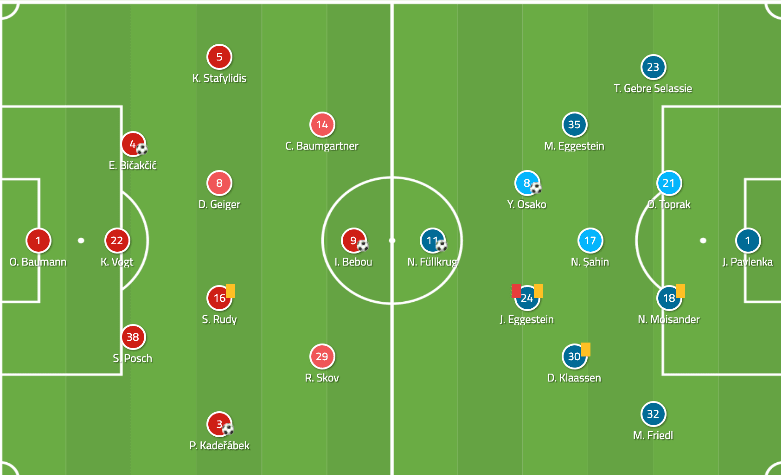
Hoffenheim lined up in a 3-4-2-1 formation. Schreuder looks to be sticking with Nagelsmann’s blueprint of playing three defenders at the back. Kevin Vogt took his place as the central defender with Bičakčić and Stefan Posch on either side of him. Kostas Stafylidis and Kadeřábek played as the wing-backs on the left and right respectively. In midfield, Hoffenheim opted for a pairing of Sebastian Rudy and Dennis Geiger. New signing Robert Skov played in attack along with Christoph Baumgartner in a more reserved role. Bebou led the line.
Werder Bremen played in a 4-3-2-1 formation. Füllkrug led the attack with Yuya Osako and Johannes Eggestein playing in central roles behind him. The trio in midfield comprised of Davy Klaasen, Nuri Sahin and Maximilian Eggestein. Theodor Gebre Selassie and Marco Friedl played as the full-backs. Niklas Moisander and Omer Toprak started in defence.
Lack of width from both sides
A noticeable trait of both sides was the lack of width and unwillingness to commit themselves in the wide areas too extensively. Despite having the wing-backs available for a more attacking role, Hoffenheim were comfortable to have them prioritize defending. Even Skov and Baumgartner did not shift to the wide areas too much. The only width on offer was provided by the forward Bebou himself, who ran the channels and attempted to create space for his teammates.
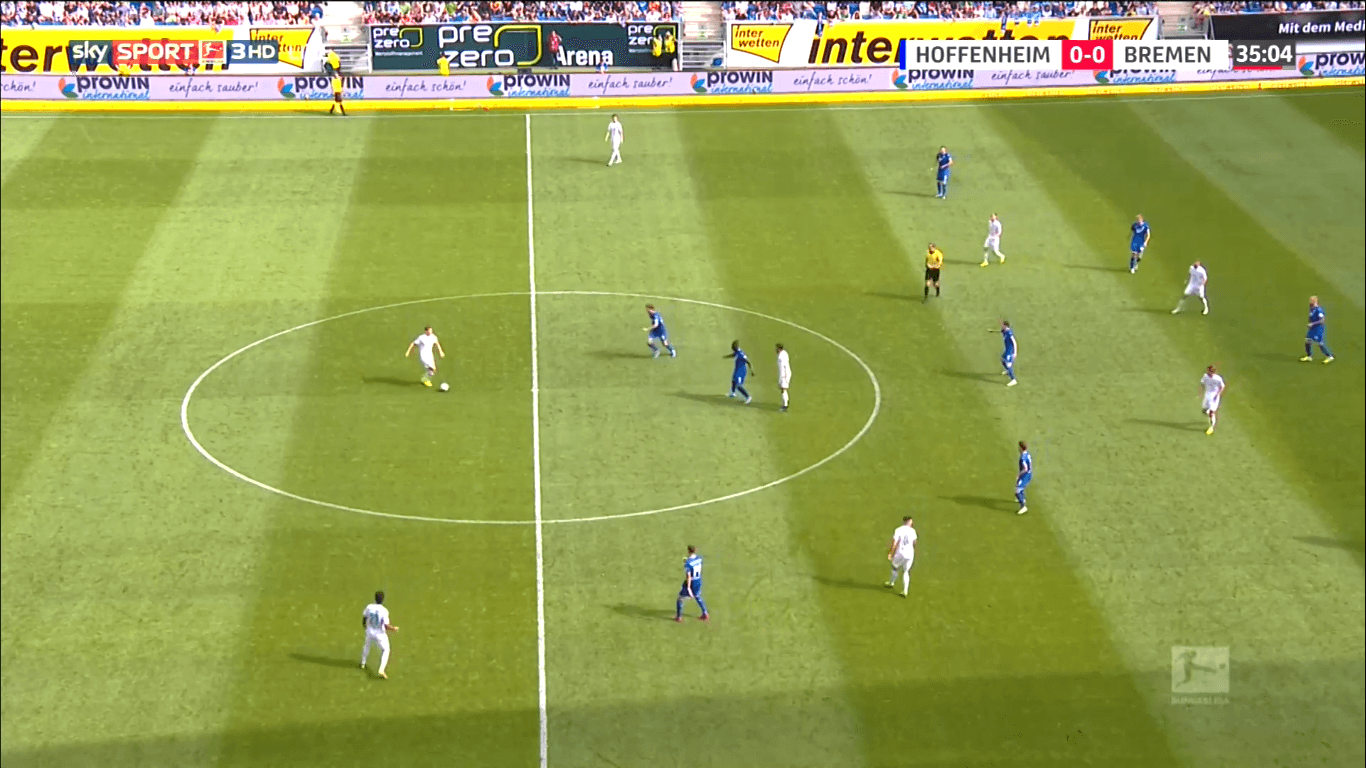
Similarly, Werder Bremen found themselves prioritizing the central areas. Their lineup indicates that they did not play any out-and-out wingers against Hoffenheim but instead chose to accommodate a number of attacking midfielders like Klaasen, the Eggestein brothers and Osako into the same side. Rather ironically, the focus on the central areas of both sides meant that they nullified each other. There were spells of possession for Hoffenheim as well as Bremen but neither side were able to find the space or time between the lines to string together any meaningful attempts. Hoffenheim had their midfielders press the likes of Klaasen and Eggestein in midfield which meant that Bremen struggled to transition the ball from defence to the midfield.
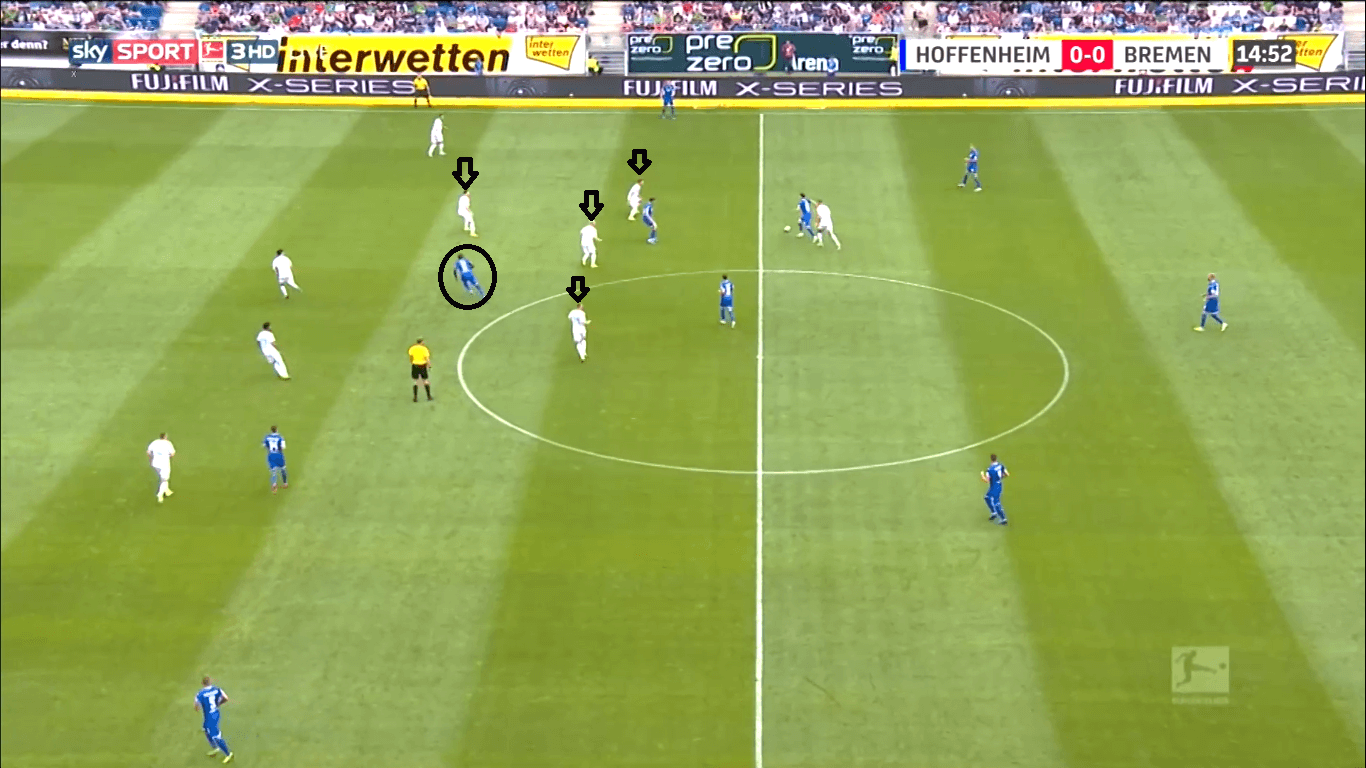
Conservative Hoffenheim
Hoffenheim themselves were rather conservative for a side playing at home. The duo of Geiger and Rudy frequently brought the ball out from defence but the lack of movement in front of them hindered any possibility of a penetrative attack.
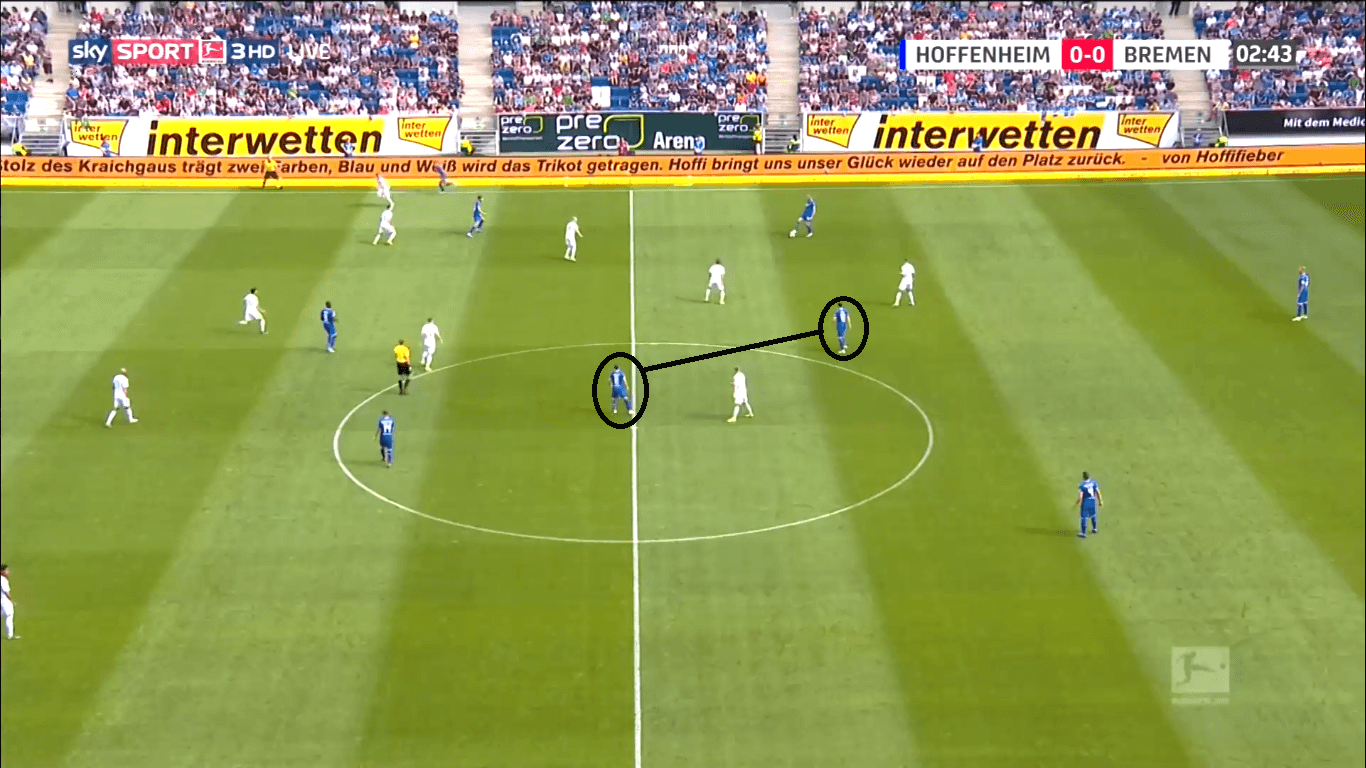
Baumgartner struggled to find space in a crowded midfield and completed just 16 passes and attempted two dribbles. Similarly, Robert Skov was stifled by the cluster in the centre of the pitch. Although he recorded a rather fortunate assist, more will be expected from the Dane in terms of his movement, passing and general influence on the game.
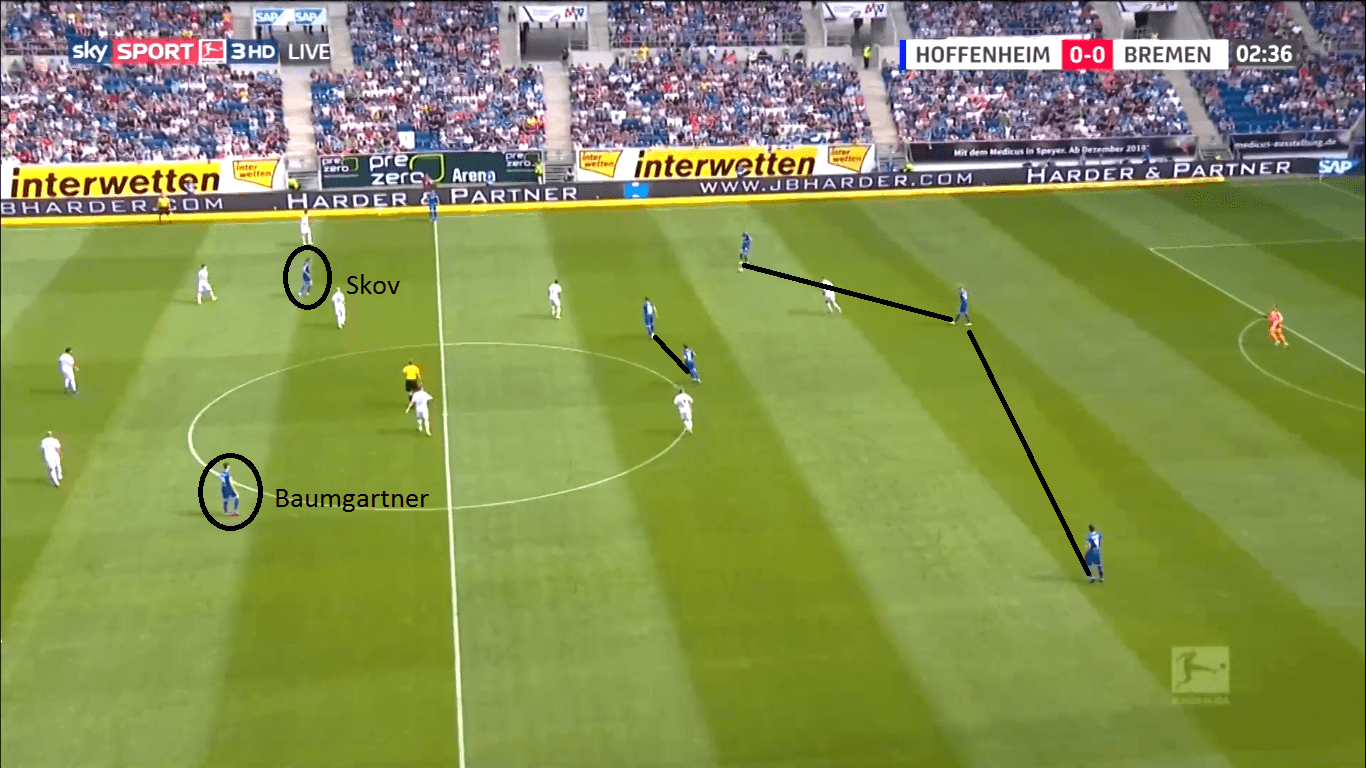
Bebou impresses
Ihlas Bebou had a very positive impact on the match, scoring one goal and trying to conjure opportunities for his side. Due to the aforementioned lack of width, Bebou was tasked with operating in the channels during the first half and freeing up some space in midfield. He made 39 passes, a high number for a forward and also contributed defensively. The Togolese also made two tackles and three clearances. His goal came from some instinctive movement as he played off the shoulder of the last defender, beat the offside and finished with precision.
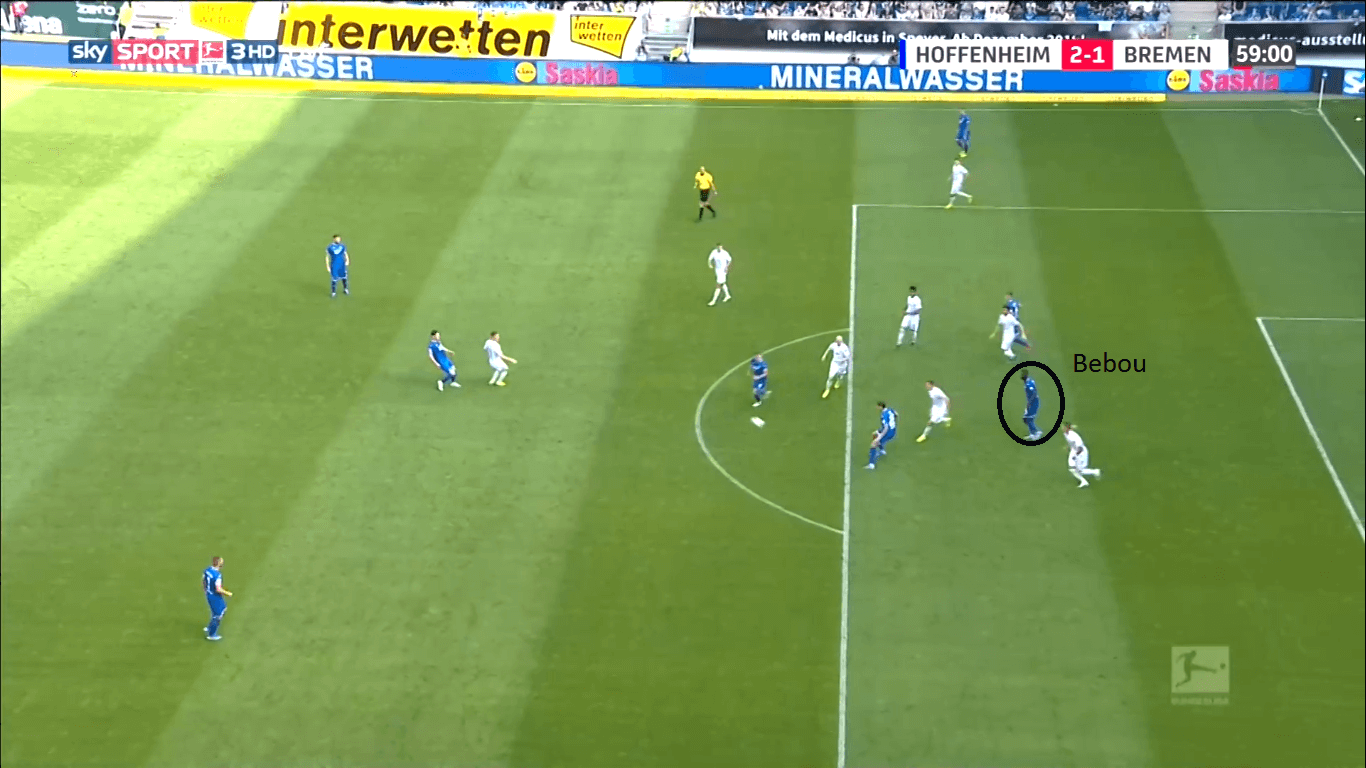
Bremen lack a plan
Bremen paid for their decision to omit any wide players from their lineup as they struggled to break down Hoffenheim’s midfield. Despite having a comparative numerical superiority in the centre of the pitch, Bremen were unable to find pockets of spaces and enjoy sustained spells of possession. In this aspect, Klaasen and Max Eggestein were too static in their positioning. The duo ought to have adapted to the situation by receiving the ball between the lines more and positioning themselves between Hoffenheim’s midfielders and wing-backs, in the vertical sense. It was only when they began crossing more did Werder Bremen look like causing the home side issues. Osako’s goal came from a defensive error on Hoffenheim’s part. However, as a whole, Werder seemed to lack a genuine plan and this cost them.
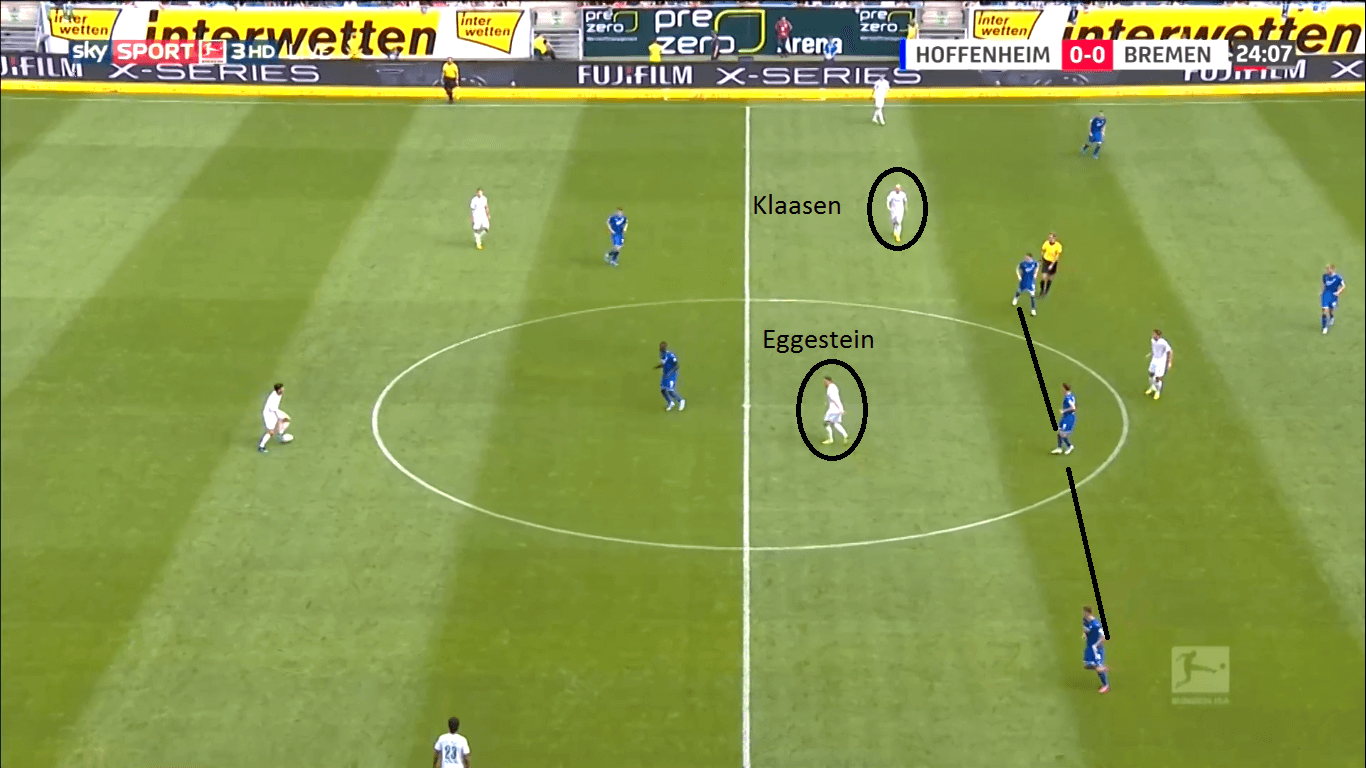
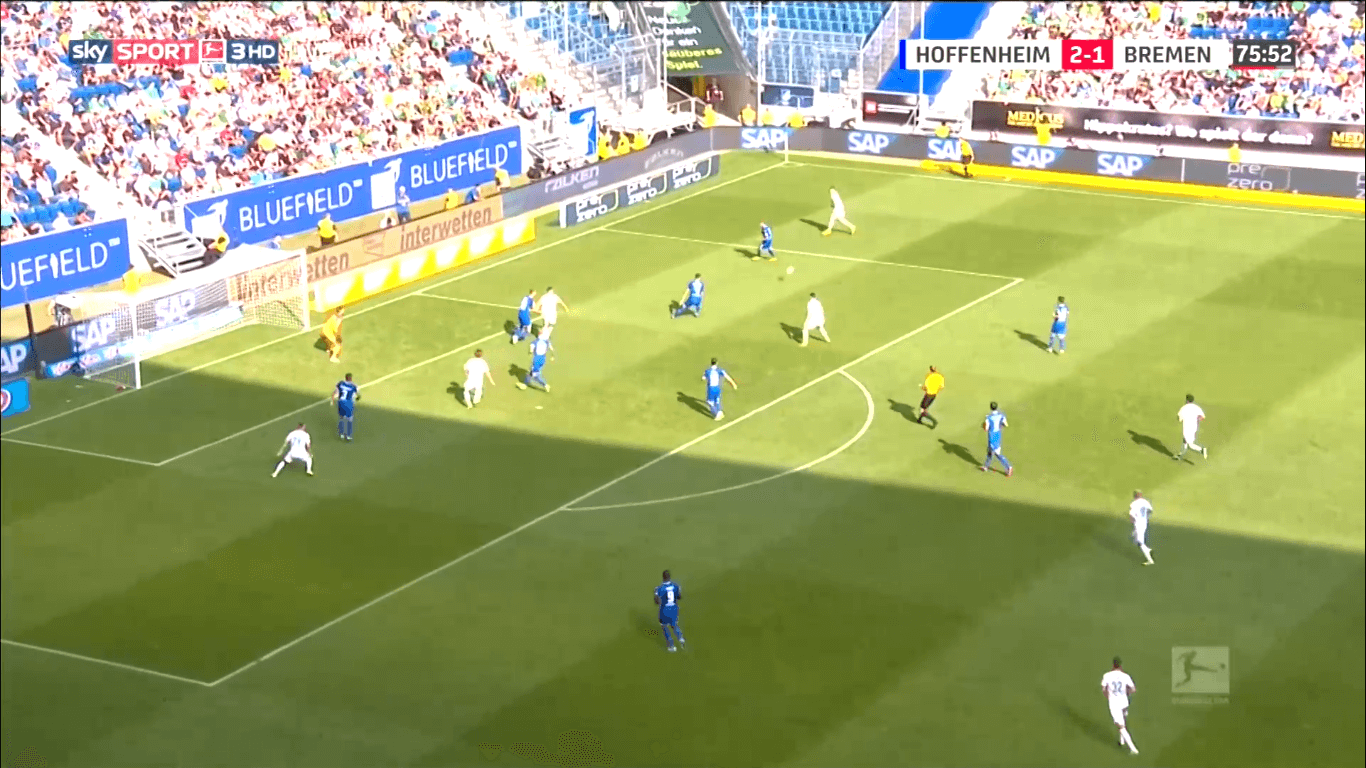
Set-piece flurry
Three out of five goals came from set-pieces as it was a day to forget for the defenders. Hoffenheim themselves do possess a significant amount of physicality in their side and used it to their advantage. Dennis Geiger was a constant menace on set-piece duty for the Werder defence. His accurate delivery enabled his teammates to ghost in unmarked and find the goal. However, Hoffenheim did not look comfortable defending either and this was an area that Werder should have taken advantage of.
Conclusion
As this analysis has seen, the game was characterized by poor defending rather than potent attacks. Hoffenheim got their season running under their new boss while Bremen are yet to record a win. It remains to be seen whether Schreuder can emulate Nagelsmann’s success at Hoffenheim but will need to bring more dynamism to his side’s attack if they are to improve.
If you love tactical analysis, then you’ll love the digital magazines from totalfootballanalysis.com – a guaranteed 100+ pages of pure tactical analysis covering topics from the Premier League, Serie A, La Liga, Bundesliga and many, many more. Buy your copy of the August issue for just ₤4.99 here.





Comments